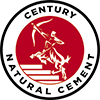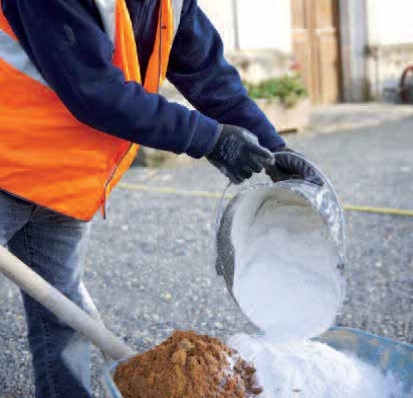
LAFARGE NATURAL HYRDAULIC LIME
Available in 55lbs bags
Natural Hydraulic Lime (NHL 3.5) from one of Europe’s largest and oldest NHL producers.
ABOUT NATURAL HYDRAULIC LIME
REAL • GENUINE • AUTHENTIC
• LaFarge Natural Hydraulic Lime is made by burning a pure naturally occurring hydraulic limestone from their quarries in the French Alps, an area reknowned for the quality of their stone. LaFarge NHL does not contain any Portland cement or additives of any kind.
NATURAL COLOR
• The raw limestone used to produce LaFarge NHL is of the highest quality, producing a lime with a whiteness index of over 92. This produces a binder which more closely matches aggregate color than any other hydraulic lime sold in North America.
WORKABILITY • SET TIME • DURABILITY
• LaFarge NHL3.5 contains over 42% free lime, aiding in the workability and breathability of mortars and plasters made with it.
• Natural Hydraulic Limes are commonly used as a replacement mortar in structures originally built of hot and non-hydraulic lime mortars due to their resilliance to harsh conditions and normal weathering. They also make ideal mortars and plasters for historic preservation and green building.
APPLICATIONS
MASONRY
• Across the world LaFarge Natural Hydraulic Lime has been trusted to restore countless historic masonry structures. With one of the highest whiteness indexes on the market, LaFarge NHL can aid in the easy matching of mortar color.
PLASTERS
• LaFarge NHL can be used in a variety of historic and modern plaster and rendering applications including historic plasterwork, plaster on hemp, strawbale, as well as providing a green alternative to modern work
such as stucco on brick, lath, and CMU.
GROUTS / SPECIALTY
• The versatility and neutrality of Natural Hydraulic Limes allow for a wide variety of uses in many different restoration applications, from hydraulic lime injection and fill grouts to stone repair and lime painting.
MIXING
Mixing per 55lb bag of LaFarge Natural Hydraulic Lime |
LIME: SAND
|
ESTIMATED COVERAGE
|
REPOINTING & BEDDING OF STONE AND BRICK MASONRY
|
1 bag : 20 Gallons
|
Will lay: 122 Brick
|
REPOINTING & BEDDING OF ASHLAR STONE AND PRESSED BRICKWORK
|
1 bag : 10 Gallons
|
Will lay: 110 Brick
|
REPOINTING & BEDDING OF RUBBLE STONE*
|
1 bag : 25 Gallons
|
Will lay: 185 linear ft.
|
PLASTER & STUCCO ON MASONRY SUBSTRATES*
|
1 bag : 20 Gallons
|
70 sq ft |
GROUTS FOR FILL
|
*CONTACT CB
|
Contact us for coverages |
|
* When a coarser or denser mix is required (as in lath plaster work) substitute 5 gallons of mason sand for concrete sand.
|
** Grouts for fill should be determined by cubic foot.
|
SURFACE PREPARATION
• Old mortar should be removed as specifed in the contract doucments and should be a uniform depth.
• Area to be repaired should be sound and free of all dust, dirt, grease, or foreign substances.
• MOISTEN WORK TO BE REPAIRED WITH WATER TO CONTROL SUCTION OF THE MASONRY UNITS.
• Do not apply to excessive hot or frozen masonry. Mimimum temperature should be 40°F and rising.
MIXING
• Water dosing should be determined by the cement to aggregate ratio used.Old mortar should be removed as specified in the contract documents and should be a uniform depth.
• Mixing may be done by hand or mechanical mixer until the product is throughly combined.
• Working time will depend on temperature and humidity and material should be mixed and used before initial set has occurred.
• ONLY MIX AS MUCH MATERIAL AS CAN BE INSTALLED IN 90 MINUTES
CURING / AFTERCARE
• Protect work from sun, wind, drying rains, for 24-72 hours depending on absorption rates of the historic substrates. Damp mist as necessary to maintain optimal curing conditions
• Depending on mix design and atmospheric conditions additional periods of curing may be deemed neccesary.


